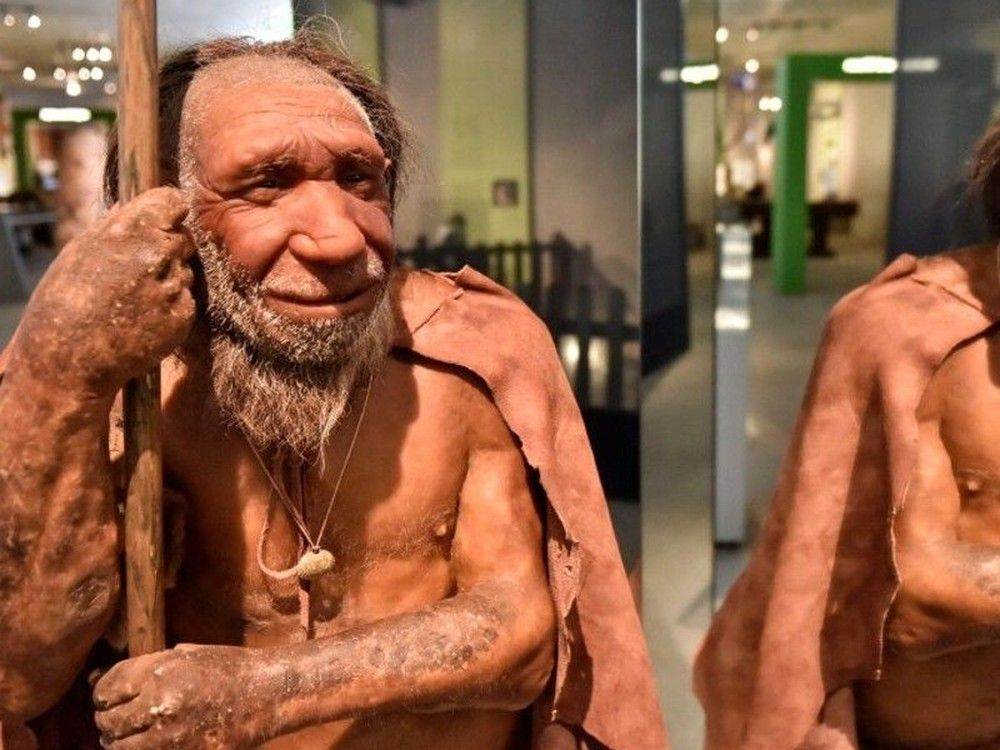This aspect of Neanderthals’ lifestyle may have led to their extinction
Lifestyle
Neanderthals went extinct roughly 40,000 years ago and many scientists have tried to pinpoint why
Published Sep 18, 2024 • Last updated 21 hours ago • 2 minute read

A new study supports the idea that Neanderthals likely went extinct because of how they lived — in isolation.
The early human species were antisocial, which could be what led to their demise, according to the study by researchers at the University of Copenhagen’s Globe Institute. It was published in the science journal Cell Genomics on Sept. 11.
Neanderthals went extinct roughly 40,000 years ago and many scientists have tried to pinpoint why. A widely accepted theory is that they remained isolated; however, evidence was lacking to confirm the theory for Western European Neanderthals until now.
THIS CONTENT IS RESERVED FOR SUBSCRIBERS
Enjoy the latest local, national and international news.
- Exclusive articles by Conrad Black, Barbara Kay and others. Plus, special edition NP Platformed and First Reading newsletters and virtual events.
- Unlimited online access to National Post and 15 news sites with one account.
- National Post ePaper, an electronic replica of the print edition to view on any device, share and comment on.
- Daily puzzles including the New York Times Crossword.
- Support local journalism.
SUBSCRIBE FOR MORE ARTICLES
Enjoy the latest local, national and international news.
- Exclusive articles by Conrad Black, Barbara Kay and others. Plus, special edition NP Platformed and First Reading newsletters and virtual events.
- Unlimited online access to National Post and 15 news sites with one account.
- National Post ePaper, an electronic replica of the print edition to view on any device, share and comment on.
- Daily puzzles including the New York Times Crossword.
- Support local journalism.
REGISTER / SIGN IN TO UNLOCK MORE ARTICLES
Create an account or sign in to continue with your reading experience.
- Access articles from across Canada with one account.
- Share your thoughts and join the conversation in the comments.
- Enjoy additional articles per month.
- Get email updates from your favourite authors.
Article content
The results from the recently published study suggested there were multiple isolated Neanderthal communities in Europe around the time they went extinct. They had “limited, if any, level of interactions between different Neanderthal populations in their last millennia, even though these populations were geographically very close to each other.”
The study is based on the discovery of the remains of a male Neanderthal, nicknamed Thorin, in a cave in southern France in 2015. Thorin is the most complete Neanderthal individual found in France since 1979, researchers said. Thorin was part of a small group living at the Grotte Mandrin, a French rock shelter overhanging the Rhône River Valley. The group did not have any genetic crossover with other known European Neanderthals, despite their proximity, according to the study.
“When we look at these genomes (a complete set of DNA) from Neanderthals, we see that they are quite inbred and therefore don’t have much genetic diversity. They have been living in small groups for many generations,” said Globe Institute associate professor Martin Sikora in a news release. He was one of the researchers of the study.
Article content
“We know that inbreeding reduces genetic diversity in a population, which can be detrimental to their ability to survive if it occurs over a longer term.”
Unlike modern humans, who are more connected, the results from analyzing Thorin “supports the notion that social organization of Neanderthals was different to early modern humans,” said Sikora.
There is evidence of early modern humans in Siberia “forming so-called mating networks to avoid issues with inbreeding, while living in small communities,” said another researcher from the University of Copenhagen Tharsika Vimala.
But that behaviour was not found among Neanderthals.
“This is some of the evidence that we were looking for and needed to figure out how likely this hypothesis of them going extinct because of their isolated lifestyle is,” said Vimala, adding that more genomic data is needed to “paint a better picture of their history.”
Our website is the place for the latest breaking news, exclusive scoops, longreads and provocative commentary. Please bookmark nationalpost.com and sign up for our newsletters here.
Article content
Discover more from Tamfis
Subscribe to get the latest posts sent to your email.


